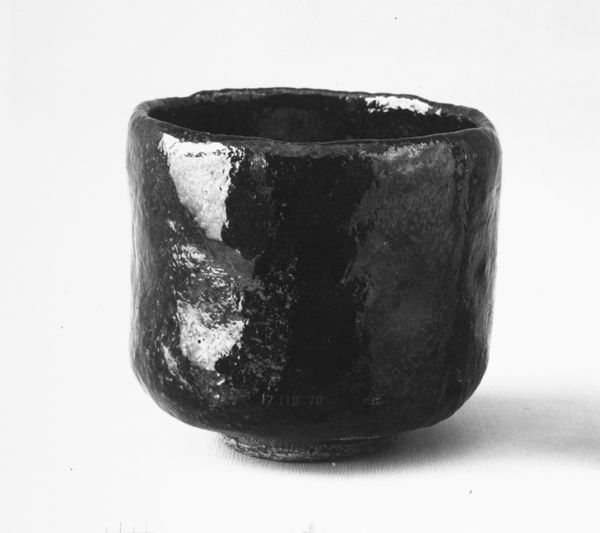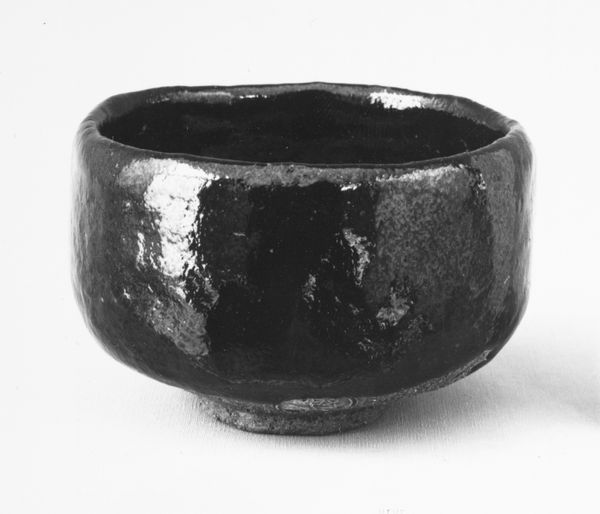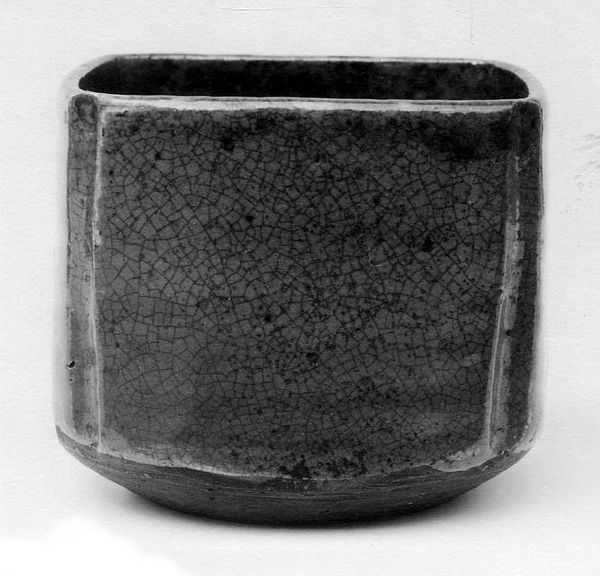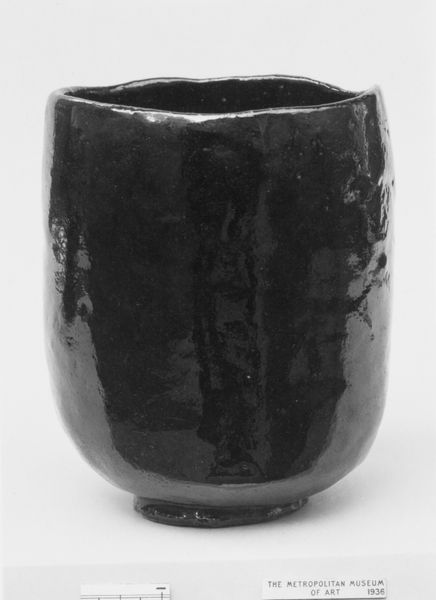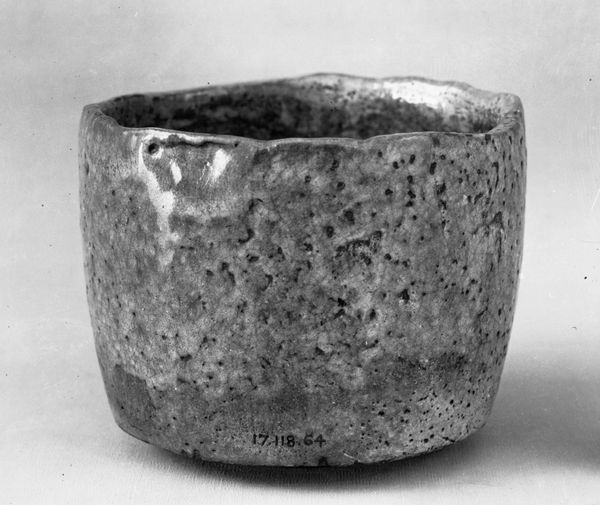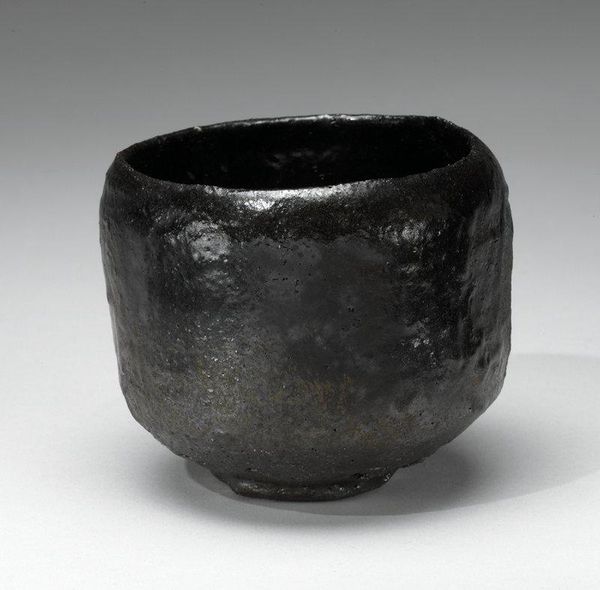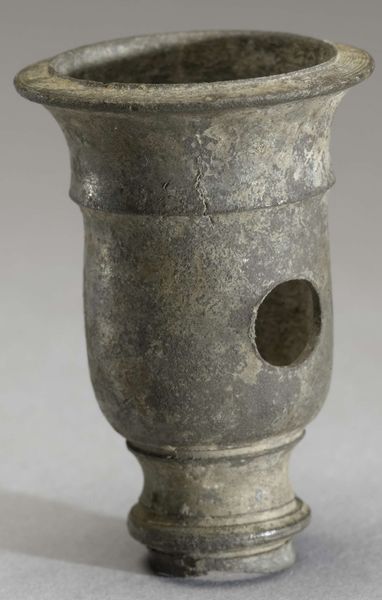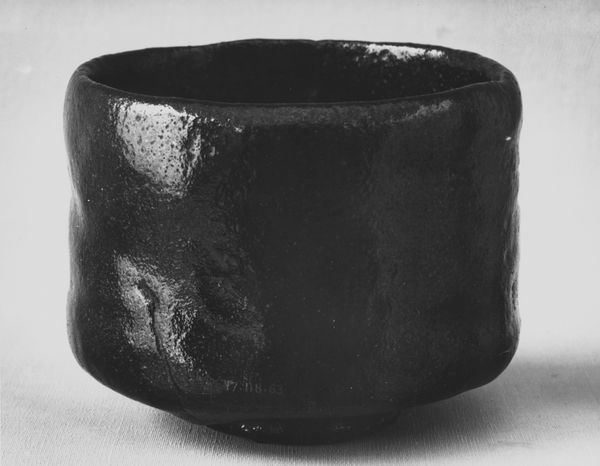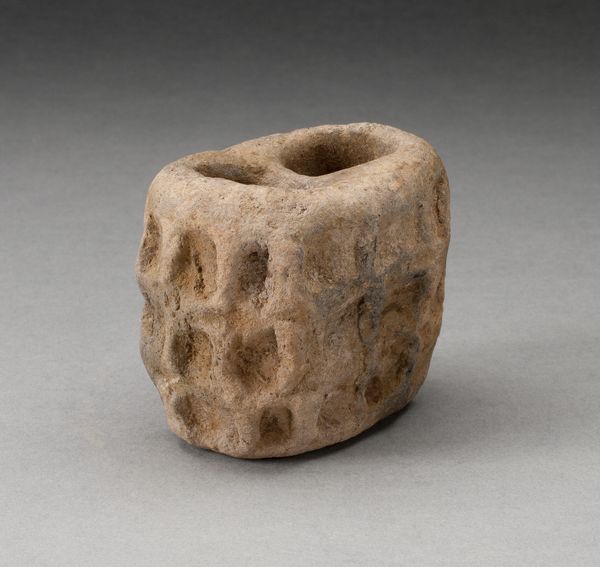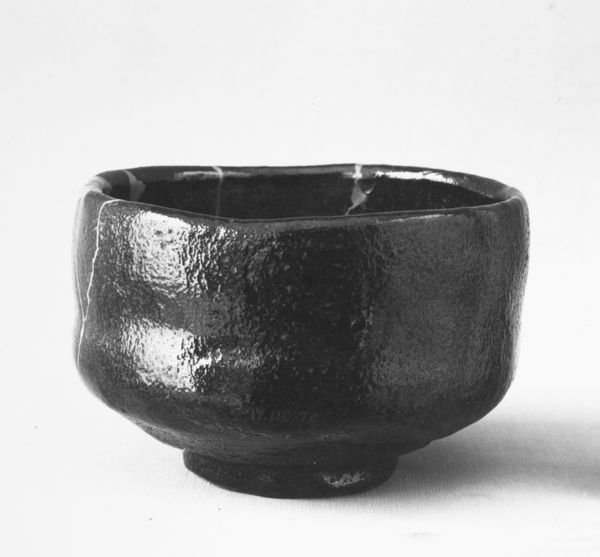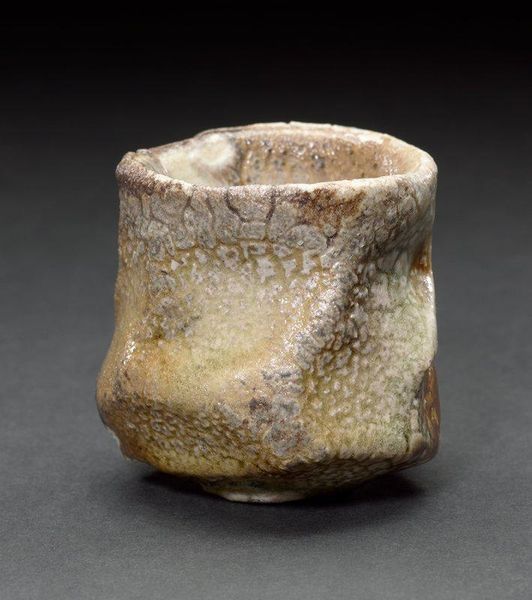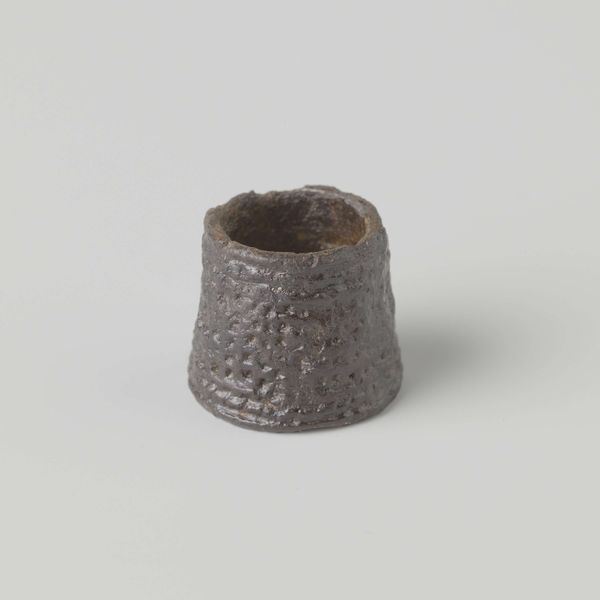
ceramic, sculpture
#
sculpture
#
asian-art
#
ceramic
#
japan
#
stoneware
#
sculpture
Dimensions: H. 4 1/4 in. (10.8 cm); Diam. 4 1/4 in. (10.8 cm)
Copyright: Public Domain
Mitsutada Ohi crafted this teabowl out of clay sometime in the late nineteenth century. It embodies the aesthetic of *wabi-sabi* so central to the Japanese tea ceremony. The rough, imperfect form and muted color speak to a reverence for natural processes and a rejection of ostentation. This aesthetic emerged in the context of Zen Buddhism and its emphasis on simplicity. But tea culture, by the time of this bowl's making, had become a complexly codified social ritual, one with close ties to elite patronage. It is worth noting that the Ohi family produced ceramics for the powerful Maeda clan. The Meiji Restoration, which occurred in the early part of Mitsutada Ohi’s life, witnessed the ending of the feudal system in Japan and with it, the patronage that enabled artistic production for centuries. Analyzing auction records and family histories, along with close attention to the object itself, can help us to understand the ongoing dialogue between artistic innovation and social change.
Comments
No comments
Be the first to comment and join the conversation on the ultimate creative platform.
